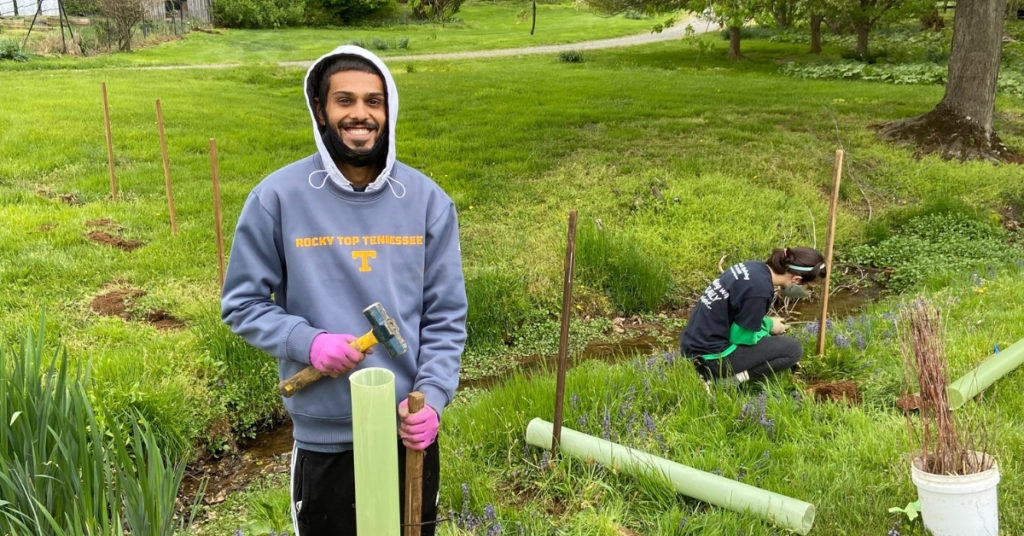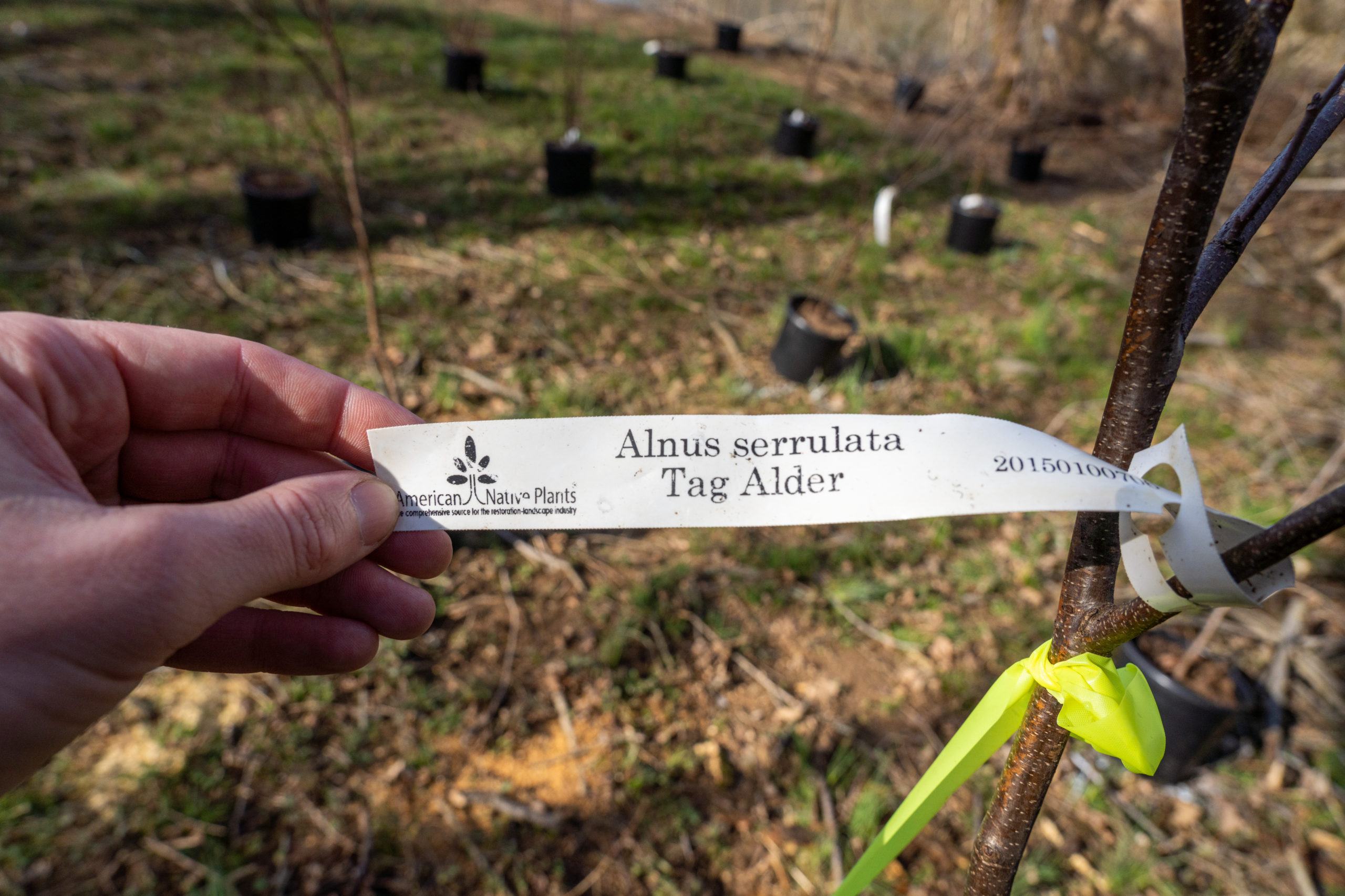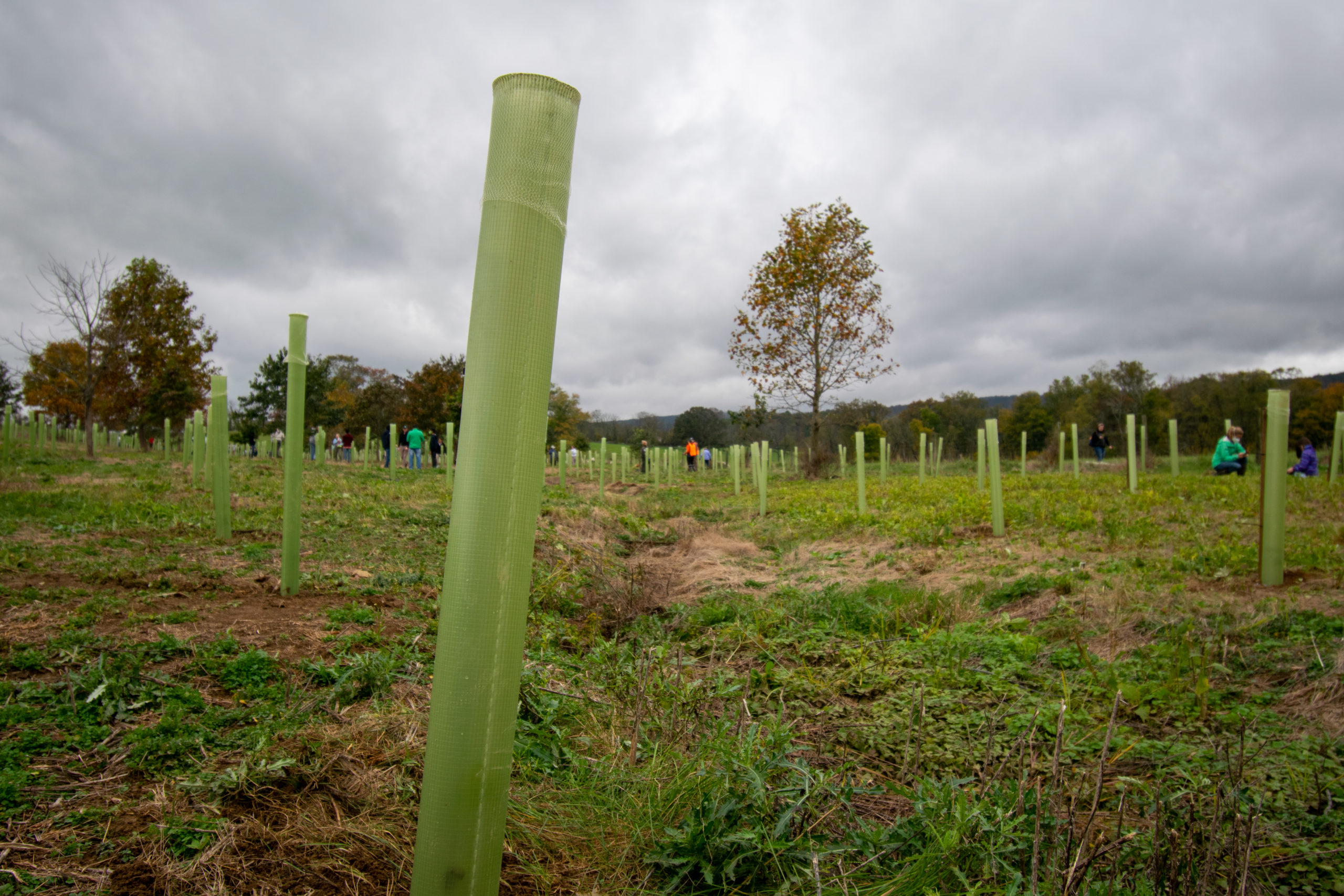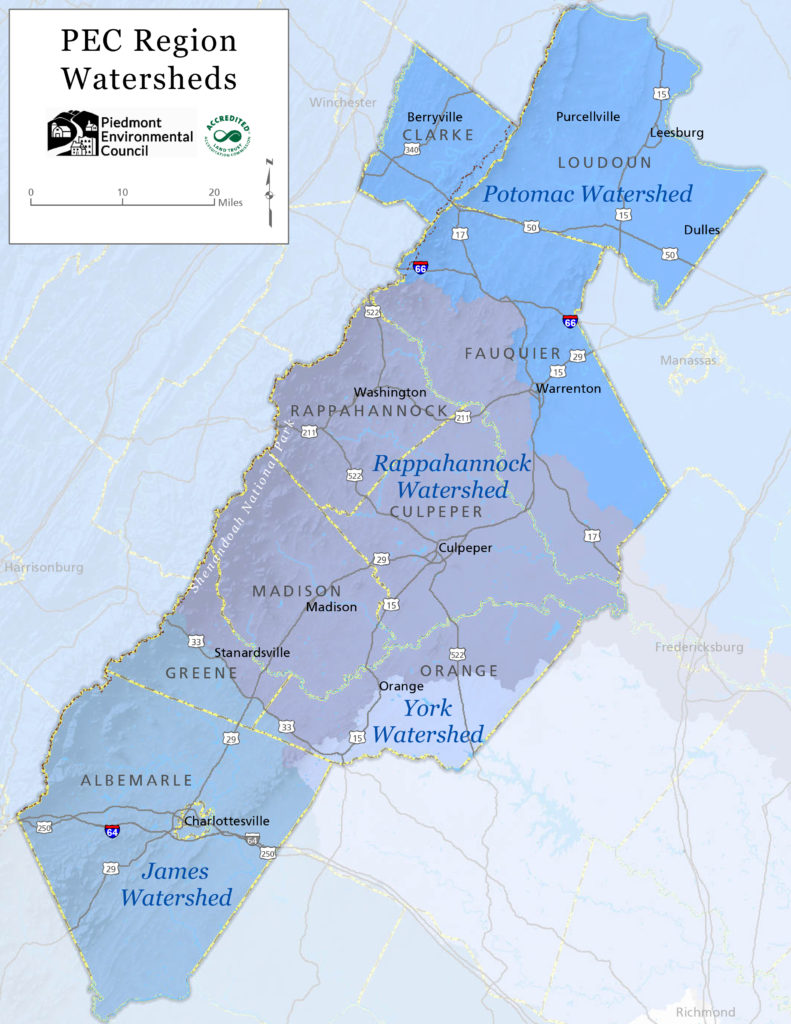The Piedmont Environmental Council provides free technical assistance, project design, materials, and labor for the planting of native trees and shrubs in riparian zones on properties in the Potomac River watershed in Clarke, Loudoun and Fauquier counties.

What will installing a buffer cost me?
The program will cover 100% of the costs associated with technical assistance, project design, materials, and installation.
Who qualifies?
Location – the property must be located within the Potomac River watershed and The Piedmont Environmental Council’s operating region. These watersheds cover all of Clarke and Loudoun counties and part of Fauquier County.
If you’re unsure of your watershed, simply enter your address into our online map to find out.
*If your property is located in the Rappahannock River watershed, check out the Headwater Stream Initiative. If your property is located in the James River watershed, check out the program offered by the James River Association.
In addition:
- The property needs to have a body of water (stream, creek, river, pond, or wetland area)
- If the property has livestock, there must be exclusion fencing protecting the area proposed for planting
- The project cannot fulfill any regulatory requirements for replanting or mitigation associated with development
- Landowners must be willing to commit to a 35’ riparian buffer
What kind of plants are used?
The program will follow local riparian buffer guidelines provided by the Virginia Department of Forestry and other partners. Projects generally include all native hardwood trees and shrubs. We also strive to incorporate species that will provide additional wildlife benefits by bearing nuts and fruits. Common species planted in the past include Pin oak (Quercus palustris), White oak (Quercus alba), Alders (Alnus spp.), Black willow (Salix nigra), Sycamore (Platanus occidentalis), Dogwoods (Cornus spp.), and Eastern redbud (Cercis canadensis). Tree tubes will be provided for all trees and shrubs.

Why do you use tree tubes?
Buffer projects use small tree saplings, generally 18-24” tall. These saplings are susceptible to a variety of stressors, such as animal browse and severe weather. Tree tubes are used to protect the saplings and ensure their survival. These tubes require annual maintenance and eventual removal. We recommend keeping the tree tubes in place for 3-5 years to promote a successful planting.

How big does the property or planting have to be to qualify?
Currently, this program does not have minimum/maximum size requirements.
How long does it take to get my buffer?
A representative from our partnership will respond to your inquiry within 2 weeks to discuss the proposed project. Site visits, project design, ordering of materials, and installation will vary based on the time of year. Project installation generally takes 1-2 days.
Questions? Reach out to PEC’s Tree Planting & Stewardship Coordinator Linnea Stewart at lstewart@pecva.org.
The Potomac Planting Program is made possible thanks to funding from a National Fish and Wildlife Foundation’s Small Watershed Grant and Virginia Environmental Endowment grant. Partners include the Loudoun, John Marshall and Lord Fairfax Soil Conservation Districts, Virgina Department of Forestry and the Goose Creek Assocation.

